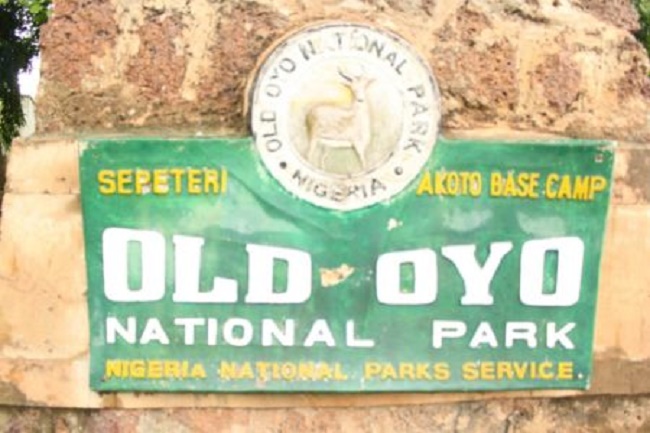Conservator of Park (CP), Old Oyo National Park, Mr. Tesleem Kareem, has said the park, though grappling with sustainability challenges, remained one of Nigeria’s most valuable ecological and cultural treasures.

Kareem on Tuesday, May 13, 2025, in Ibadan underscored the management’s commitment to ensure its profitability to all stakeholders.
While identifying the challenges, the CP also revealed some of the steps already taken and the ones being considered to mitigate the situation.
The park, home to a rich variety of wildlife and steeped in cultural and historical significance, spans 2,512 square kilometres of open plains in Oyo town.
Located in the South-West zone of Nigeria, the park spreads across 10 Local Government Areas in Oyo State and one in Kwara.
Its breathtaking landscapes and wealth of natural resources underscore the need for adequate funding and consistent maintenance.
The conservator says beyond its ecological value, Old Oyo National Park serves as a source of revenue for the Federal Government (FG) through tourism and research-related activities.
“It attracts visitors eager to explore its scenic beauty, study its biodiversity, and connect with the remnants of the ancient Oyo Empire that once thrived in the history of the Yoruba people,” he said.
NAN, however, reports that despite its immense potential, the park continues to battle with issues such as underfunding, poor infrastructure, security and limited public awareness.
According to Kareem, with strategic investment and renewed focus, Old Oyo National Park can become a major driver of sustainable tourism and national heritage conservation.
“The number of visitors to the park has dropped from 98 per cent to about 50 per cent, reducing revenue from 90 per cent to about 60 per cent.
“Although the park is still generating income in millions of naira, it cannot be compared with when security and the economy were better.
“In the past, when the country was okay, we generated a lot of revenue.
“If the country is secure, national and international tourists will return to the park,” he said.
The CP says the park protects biodiversity, fauna and flora, water and mountains, and uniquely promotes archaeological and historical sites.
“It preserves the cradle of the Yoruba race called Oyo Ile, where the Yoruba race started in the 17th and 18th centuries.
“Oranmiyan, as the king established the then Oyo empire,” he said.
According to the conservator, the park also encourages and provides education on wildlife and nature conservation.
“It promotes grounds for research fellows and students to, at least, experience or gain knowledge about what they are being taught.
“It serves as an outside laboratory to most wildlife institutions,” Kareem said.
Despite the park’s positive services, Kareem identified poaching, wildlife hunting, illegal logging and mining as some of its challenges.
“Wherever you have illegal mining, it attracts banditry and kidnapping,” he said.
Kareem, however, reiterated that the park managers would not relent in their mandate of protecting, managing and conserving resources for the present and future generations.
He said the park is collaborating with the military and other security agencies to curtail the security challenge, thereby attracting more tourists, was paying off.
“We mostly organise joint patrols to control the park,” he said.
In addition, he said the park had engaged digital and modern technology to monitor games, intruders and confront illegal activities destroying aquatic life, plants, animals and natural resources.
“We use drones, cyber trackers, sign cameras, camera traps, GPS, map reading and even helicopters for surveillance.
“These modern gadgets help to record the kinds of games that walk around and check intruders’ activities and hideouts,” he said.
However, he identified the lack of a constant power supply as a hindrance to effective and maximised technological means of securing and administering the park.
According to him, the park relies on an alternate power source, such as solar panels, to discharge its operations.
The conservator reminded the public that the Act establishing the park had empowered its officials to bear firearms.
“As a paramilitary body, we have the power to arrest and prosecute intruders who cause harm to the park,” he said.
To this end, Kareem said that about 200 offenders had been jailed since the park’s establishment in 1991, while many others enjoyed the privilege of the option of a fine.
The conservator, however, said there was no option of a fine for anyone caught by park rangers hunting or killing endangered animals such as elephants, crocodiles, hippopotamuses, lions, eagles and monkeys.
“If you kill any of these animals within the park or areas very close to the park and you are caught, there will be no option for a fine; you will be jailed,” he said.
Yet, he said not all cases ended up in courts, as some were rather handled through Alternative Dispute Resolution (ADR) involving the supporting communities.
Kareem said the park management would, therefore, continue to work with community leaders and other societal influencers to sensitise the public on the need to protect and patronise the park.
“We need to make the public understand the rich culture of Nigeria as we work with about 115 supporting communities where the park is located,” he said.
He also called for the partnership of individuals, private institutions and non-governmental organisations with the park to establish its overall benefits to humanity.
“Outside the fact that we are promoting, protecting, conserving, and preserving biodiversity, we are still promoting the culture of the people.
“So, we are appealing to all stakeholders, as this park, with its natural resources, is a capital-intensive organisation,” he said.
By Suleiman Shehu and Ibukun Emiola
